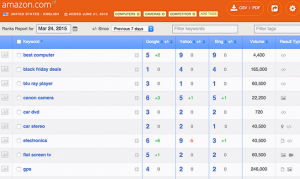
Your customers aren’t like those distant relatives you see once a year to avoid controversial topics over fruitcake. During the holidays—whether it’s Christmas, Single’s Day, Diwali, or Golden Week—you can make meaningful connections through unique promotions. And after the holidays are over, you can build on that engagement with continued, relevant offers and value.
When it comes to creating a relevant, meaningful, and delightful customer experiences for your international segments, there is no one-size-fits-all strategy for the digital marketer. The good news is, the skills and principles you’ve learned in launching multichannel, mobile experiences can be applied to your global marketing efforts. Customization, language localization, geolocation, and adaptive personalization are all key pieces to the puzzle.
Here I’m sharing five tips for effectively connecting with and engaging individuals across geographic, linguistic, and cultural borders. These tips won’t answer every question you’re likely to have when promoting your brand, products, and services to holiday shoppers in China, India, France, or Australia, but they offer some guideposts to keep you optimizing in the right direction. Remember: your goal is to think beyond gimmicks and promotions and reward customers to build loyalty.
Promote Shipping without Borders
Free or flat rate shipping makes a big difference to international shoppers. Enticing shipping offers can represent big discounts in themselves. But it’s not just about cost, it’s largely about timing and convenience for rushed shoppers who want gifts to arrive in time for the big event. As a seasonal gesture of goodwill to customers, consider automatically upgrading orders to free express international shipping, or making goods duty free.
Be Multilingual, Not Just Multichannel
Did you know Valentine’s Day is celebrated in Japan because American chocolate companies wanted to expand their markets in the 1950s? Only they botched the translation and the Japanese audience took Valentine’s Day to be a holiday where women give sweets to their platonic male friends and coworkers. Lucky for the companies this still increased chocolate sales, but the mistranslation could have been much worse.
Use the language of your local audience, being mindful of specific regional dialects and cultural expressions. Language localization helps you communicate more meaningfully and seamlessly with targeted, international segments. Far-flung customers will feel they can trust a brand that tailors its communications to them; it shows you care about their specific needs. It also ensures that they get the message. If the dialect is off, they might not even understand that special promotion you worked hard to produce.
A Picture Is Worth a Thousand Words (in Mobile)
One way to protect against botched translations and misunderstandings is to use the universal language of pictures. In India, for example, a huge portion of the population shops online and browses on smartphones. But bear in mind there are dozens of languages and thousands of dialects in use throughout the country. That’s a lot of opportunity for even the most careful marketers to get it wrong. To communicate effectively to these mobile masses, marketers are moving away from text altogether and speaking in images.
Customize Email Campaigns
Region-specific messaging applies to email campaigns and landing pages as well. Geotarget your global customers and subscribers with emails and landing pages that use their dialect (or clear images) and feature deals that are relevant to their country, culture, and celebrations. It’s also important to understand that people in different countries respond differently to the timing of campaigns. Although US audiences open more holiday emails on the weekends, the French are more likely to open midweek. Similarly, the types of promotions that appeal to shoppers vary from country to country—the Chinese like to see “percent off” deals, whereas New Zealanders prefer “dollar off” promotions.
Enable Seamless Mobile Checkout
Make your checkout screens adaptable to users across multiple time zones and currencies. This may be as simple as enabling forms that respond to the shopper’s geolocation by asking for the appropriate shipping and billing information. Estimate shipping fees and delivery dates for the individual’s country so it’s not a surprise when they reach the end of checkout. And be sure to accommodate global credit cards and emerging payment technologies like PayPal, Apple Pay, Square, and more. Adobe Digital Index (ADI) recently found that “smartphone conversion rates are much higher when retailers offer digital wallet payment options.”
Stay in Touch with Global Segments after the Holidays
The best strategy is to remain pliant, attentive, and responsive as you move into new regions, cultures, languages, and preferences. Every market is changing rapidly as digital technologies advance. The global trend is toward greater integration, personalization, and localization. And soon the overwhelming majority of our customer touchpoints and transaction will be mobile. Remain connected, and in pocket, year round, and you’ll be a natural choice come the holiday season—whenever and wherever it may be.
Digital & Social Articles on Business 2 Community
(379)
Report Post








